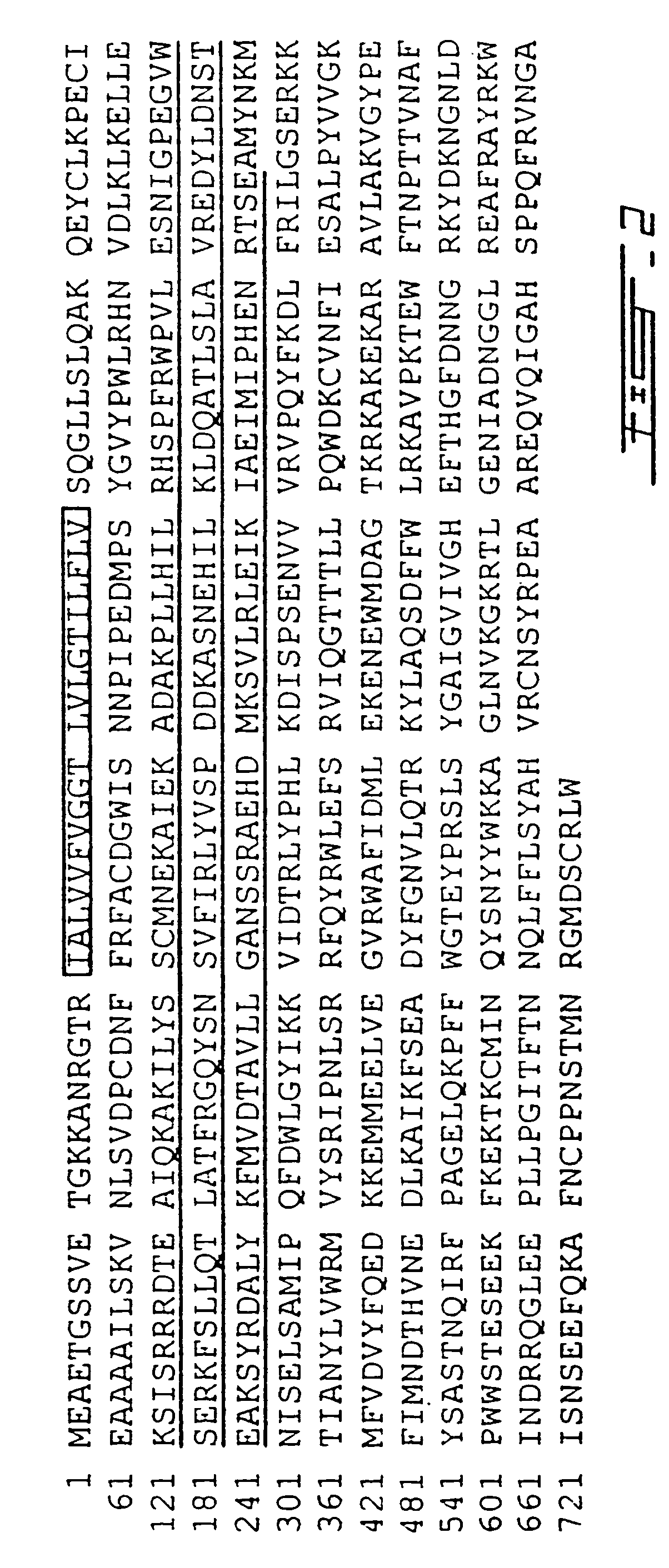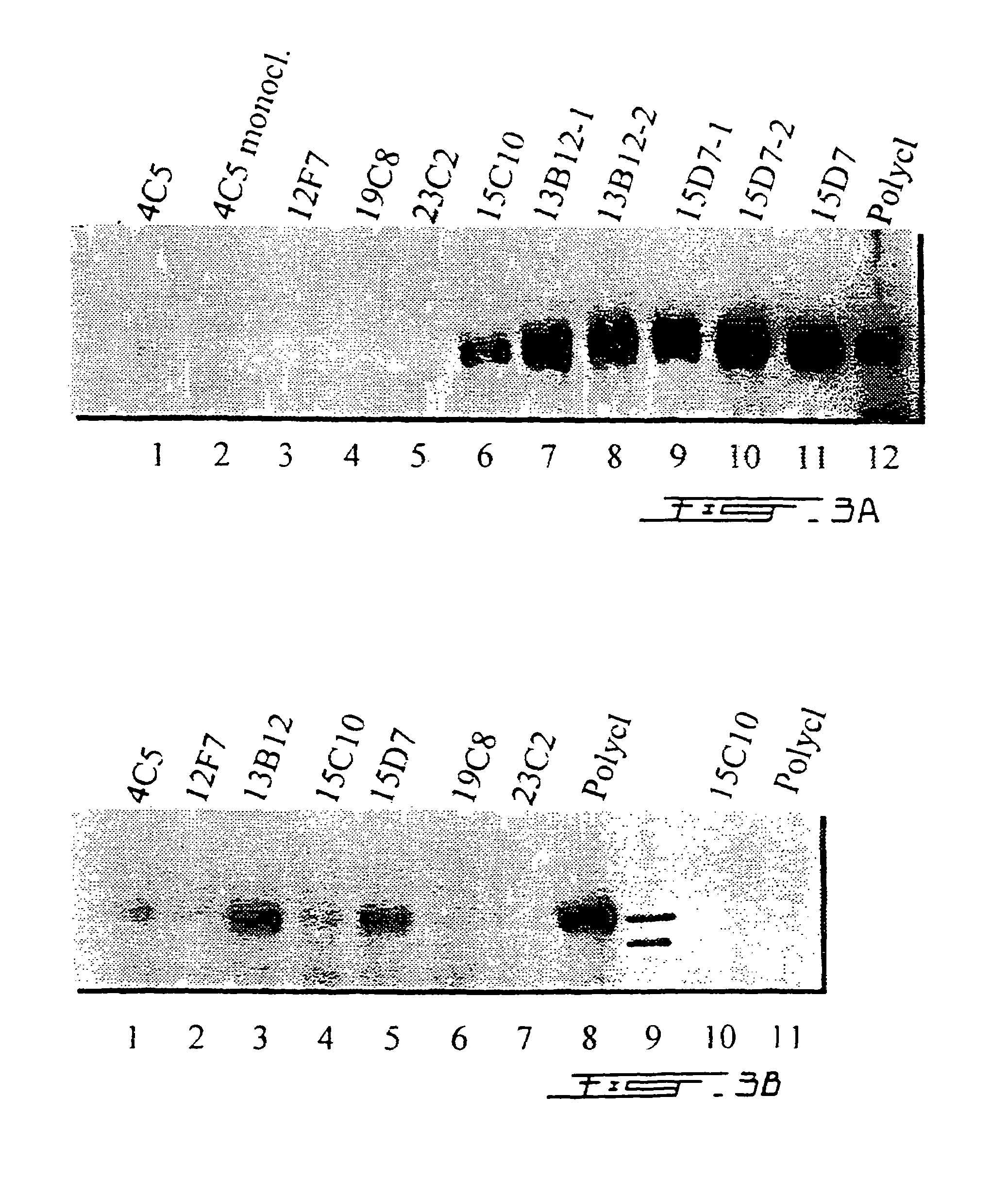Composition, methods and reagents for the synthesis of a soluble form of human PHEX
a technology of phex and soluble form, which is applied in the field of phex soluble form synthesis, can solve the problems of detergent-purified proteins usually presenting stability and solubility problems, interfere with the catalytic activity of enzymes, etc., and achieves the effects of high throughput, stable and solubility, and convenient preparation and purification
- Summary
- Abstract
- Description
- Claims
- Application Information
AI Technical Summary
Benefits of technology
Problems solved by technology
Method used
Image
Examples
example i
Use of Recombinant secPHEX to Identify its Natural Substrate in Bone
[0060]PHEX is expressed in osteoblasts, and its expression is temporally associated with the mineralization of the extracellular matrix in cultured osteoblasts (Beck et al., 1997a; Du et al., 1996a; Guo and Quarles, 1997a) and during development (Ruchon et al., 2000). These observations suggest that bone is a relevant site of PHEX expression and that a potential relationship exists between mutations of PHEX and aberrant osteoblast-mediated mineralization. Thus PHEX may function in osteoblasts to metabolize endogenous or exogenous factors that regulate the process of osteoblast-mediated mineralization. In support of this hypothesis, a recent report suggests that loss of PHEX function in cultured osteoblasts of Hyp mice is associated with the accumulation of a factor or factors that inhibit mineralization of extracellular matrix in vitro (Xiao et al., 1998). The availability of recombinant soluble PHEX greatly facilit...
example ii
Enzymatic Assay
[0066]A peptide consisting of, for example, 10 amino acid residues spanning the cleavage site of PTHrP107-139 is synthesized by solid-phase peptide synthesis and used as a substrate for PHEX. The cleavage site is determined by assaying the enzymatic reaction products with a mass spectrometer equipped with a liquid sample inlet port, as found with LC-MS instruments, with the separation achieved in-line or off-line. This decapeptide (10 μg) is incubated in the presence of purified secPHEX (1-10 μg total protein), at 37° C. for 60 min in MES pH 6.5. The reaction is terminated by the addition of TFA to a final concentration of 0.1%. Metabolites are analyzed using a C-18 μ-Bondapack column (Waters). For example, metabolites may be resolved with a 45 min linear gradient of 0-40% acetonitrile in 0.1% trifluoroacetic acid at a rate of 1.0 ml / min. The eluted peptides are detected by monitoring their absorbance at 214 and 254 nm. The decapeptide should be cleaved into two short...
example iii
Screening for Quenched-fluorescent Substrate
[0067]The peptide identified in Example II is used to design and synthesize internally quenched fluorescent peptide substrates for PHEX. Small peptide libraries are prepared with a fluorophore at one extremity and a quencher group at the other (Meldal, 1998). The substrate can be identified using a strategy described in (Apletalina et al., 1998). For each hexapeptide library, the identity of one residue at one position remains constant while the rest is randomized (for a total of 6*20=120 individual libraries). Each library is comprised of 3.2 million different members and is identified both by the position of the constant residue along the hexapeptide, and its identity. A purified preparation of PHEX enzyme is added to each library and the fluorescence is recorded. The data is organized to identify the libraries producing the most fluorescence for each position along the hexapeptide. This arrangement suggests the identity of important res...
PUM
| Property | Measurement | Unit |
|---|---|---|
| pH | aaaaa | aaaaa |
| pH | aaaaa | aaaaa |
| pH | aaaaa | aaaaa |
Abstract
Description
Claims
Application Information
 Login to View More
Login to View More - R&D
- Intellectual Property
- Life Sciences
- Materials
- Tech Scout
- Unparalleled Data Quality
- Higher Quality Content
- 60% Fewer Hallucinations
Browse by: Latest US Patents, China's latest patents, Technical Efficacy Thesaurus, Application Domain, Technology Topic, Popular Technical Reports.
© 2025 PatSnap. All rights reserved.Legal|Privacy policy|Modern Slavery Act Transparency Statement|Sitemap|About US| Contact US: help@patsnap.com



